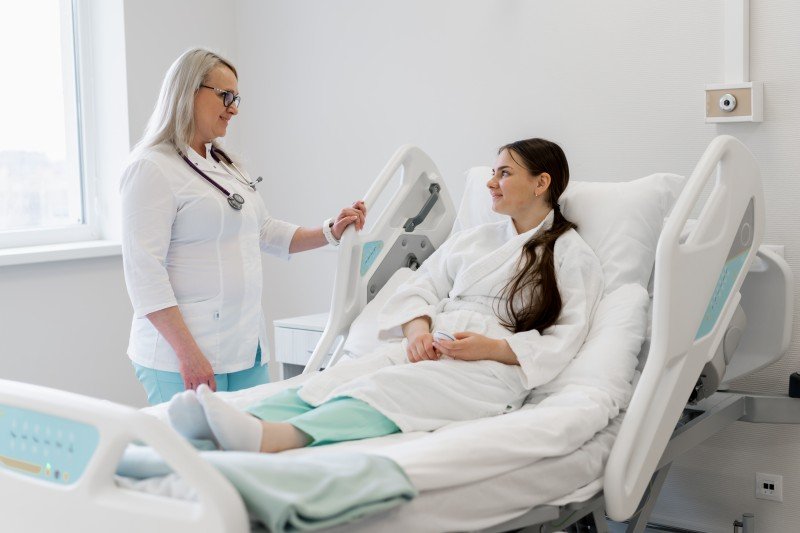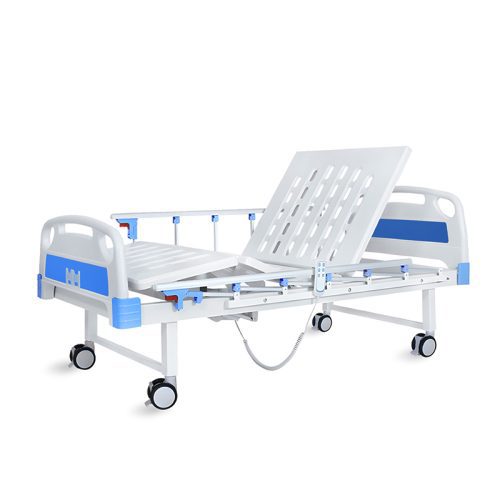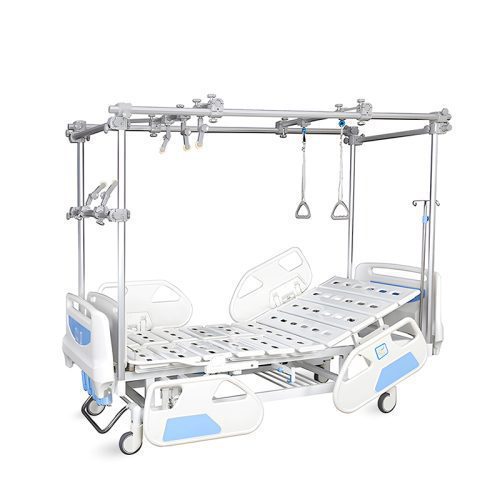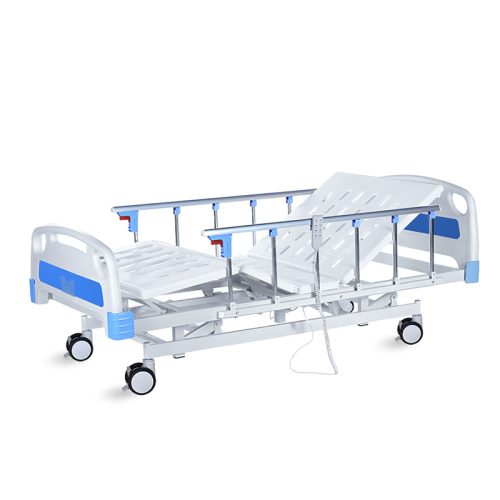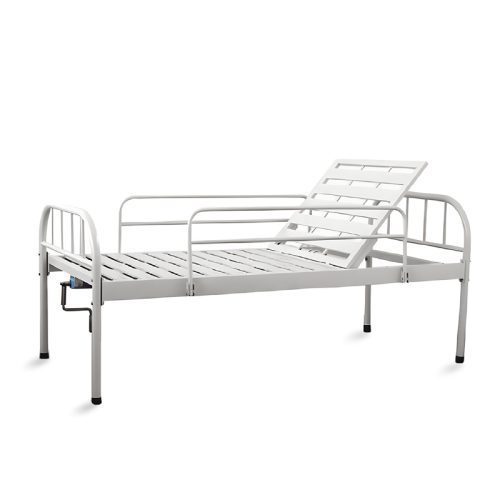
- Cama de hospital
Guia definitivo para a escolha de uma cama hospitalar ao domicílio em 2025
- Por kelingmedical
What is a Home Hospital Bed?
Specialized beds built for residential use serve as home hospital beds. These beds replicate hospital-grade features while being adjusted for home environments through capabilities like height adjustment and customizable head and foot positions and include safety side rails. Home hospital beds provide essential support and care for individuals facing medical conditions or mobility challenges while recovering from surgery.
Home hospital beds provide adjustable positions for the head, foot, and height settings to maximize user comfort and care.
Sturdy frames along with side rails and locking wheels protect patients from potential accidents.
Patients receive a comfortable sleep and rest experience through the design of home hospital beds.
Benefits of Home Hospital Beds
Patients and caregivers experience multiple advantages when using home hospital beds. Here are some of the key advantages:
Patients can adjust their position to achieve maximum comfort whether they are sleeping or engaging in activities like reading or watching TV.
Patient safety gets better because side rails and locking wheels help prevent falls and injuries.
Adjustable features enable caregivers to easily administer medical care and track patient conditions.
The use of home hospital beds removes the necessity of hospital travel for patients who can now recover at home.
Purchasing a home hospital bed proves to be a more financially sound option compared to extended hospital stays and regular hospital visits.
Types of Home Hospital Beds
Home hospital beds come in various types each tailored to meet specific needs. The following sections detail the most common types of home hospital beds.
Manual home hospital beds require adjustments through a crank or lever. These beds are cheaper but need more work to operate.
Semi-Electric Home Hospital Beds operate using both manual crank systems and electric controls to simplify adjustment of specific functions.
Full-Electric Home Hospital Beds operate entirely on electrical power which allows users to adjust them with a simple button press. Full-Electric Home Hospital Beds provide unparalleled convenience and user-friendly operation.
Bariatric Home Hospital Beds are constructed for patients requiring larger weight capacities and include reinforced frames together with wider designs.
Pediatric home hospital beds provide smaller dimensions and child-friendly features to accommodate young patients.
The following features should guide your selection when looking at home hospital beds.
To pick the best home hospital bed for your needs you should evaluate these essential features.
Adjusting bed height helps caregivers offer better patient care through easier access and interaction.
Side rails create a safer environment by blocking patients from unintentionally rolling out of bed.
Locking wheels keep the bed securely stationary during necessary circumstances.
It is essential to select a mattress that is made specifically for home hospital beds to guarantee both proper support and comfort.
Easy-to-clean materials for beds aid in maintaining proper hygiene and reduce infection risks.
Patients can adjust their bed positions easily through a remote control without needing to exert physical force.
Choosing the right home hospital bed involves evaluating the specific requirements of the patient along with financial constraints and the care environment.
Choosing the appropriate home hospital bed demands thorough evaluation of the patient’s requirements along with budget considerations and the care environment. Follow these tips to ensure you select the most suitable home hospital bed.
When selecting a bed for a patient you must evaluate elements such as their medical state along with their ability to move and their physical dimensions.
The wide price range of home hospital beds makes it essential to establish your budget before choosing one.
Check room dimensions to make sure a larger bed model will fit comfortably.
When possible, test various home hospital beds by physically trying them out to discover which model provides the best comfort.
Examine user reviews to assess details about the bed’s quality and its durability and performance.
Tips for Maintaining a Home Hospital Bed
Ensuring your home hospital bed functions properly and lasts longer requires appropriate maintenance routines. These guidelines will help you maintain your bed in excellent condition.
The bed frame and mattress need regular cleaning to stop dirt and bacteria from accumulating.
Periodically inspect the bed for damage indicators such as loose screws and frayed electrical cords.
To retain your warranty protection you must always adhere to the manufacturer’s usage and maintenance instructions.
Regularly rotating the mattress helps distribute wear evenly across its surface thereby prolonging its useful life.
Selecting the wrong home hospital bed can result in discomfort and frustration for patients so be aware of these common mistakes to avoid.
Selecting an inappropriate home hospital bed can result in discomfort and user frustration. Here are some common mistakes to avoid:
Different patients require different beds so a single solution won’t meet everyone’s needs. It is essential to evaluate each patient’s unique requirements and personal preferences when selecting a bed.
Although financial considerations matter when purchasing a bed, the least costly choice can lead to inadequate support and comfort.
Choose a bed that fits the patient’s dimensions and room space to prevent any compatibility issues with the patient’s mattress.
The longevity and proper functioning of a bed depends on performing appropriate maintenance. Neglecting routine cleaning and inspections will result in early wear and tear on the bed.
Conclusão
Selecting an appropriate home hospital bed stands as a critical choice with potential effects on both patient safety and recovery speed. When you learn about home hospital bed types and important features along with maintenance strategies you will choose a bed that fulfills your requirements. Selecting the proper home hospital bed helps ensure patient comfort whether you manage a healthcare facility or care for a loved one at home.
FAQ
Q: Home hospital beds have different weight capacities which typically range from 300 pounds to 1,000 pounds based on the specific model. A: Home hospital bed weight capacity differs between models but most beds hold between 300 to 1,000 pounds.
Q: It is not appropriate to use a standard mattress on a home hospital bed. A: Regular mattresses lack the necessary design features to function effectively with home hospital beds. Select a mattress that is designed for use with home hospital beds.
P: As camas de hospital doméstico estão cobertas pelo seguro? A: If a home hospital bed meets medical necessity criteria certain insurance plans will provide cost coverage. Check with your insurance provider for details.
Q: What is the price range for purchasing a home hospital bed? A: Different types and features of beds result in varying costs. Home hospital beds with manual functionality are generally less expensive compared to full-electric models.
📧 Email: inquiry@shkeling.com
🌐 Sítio Web: www.shkeling.com.cn
Estamos ansiosos por construir uma parceria de sucesso consigo!

